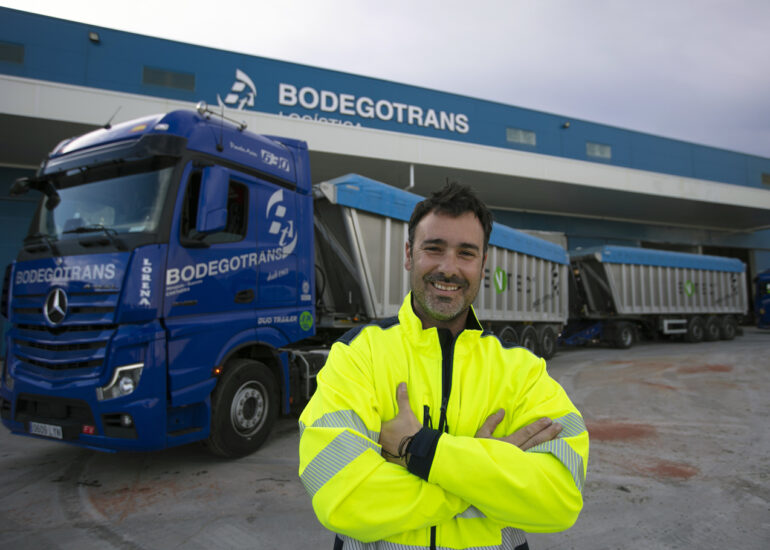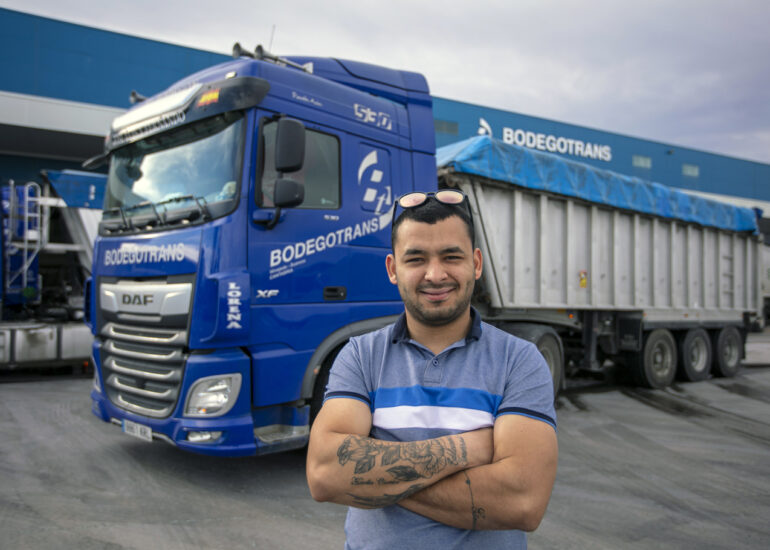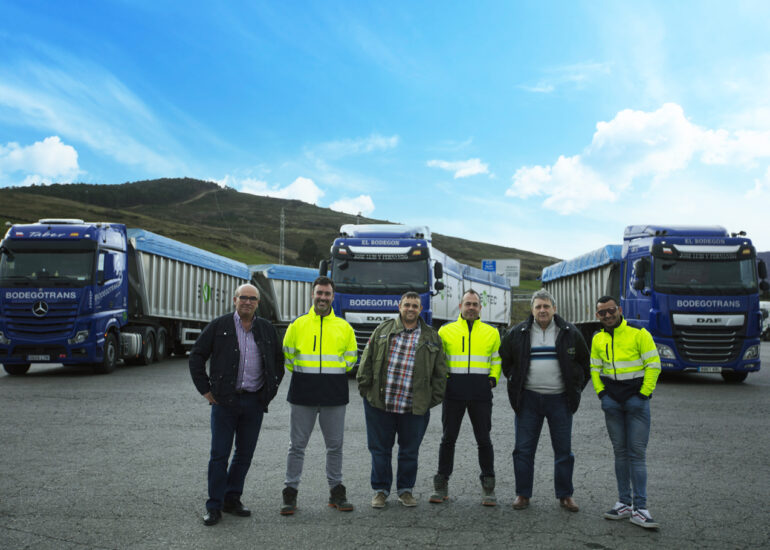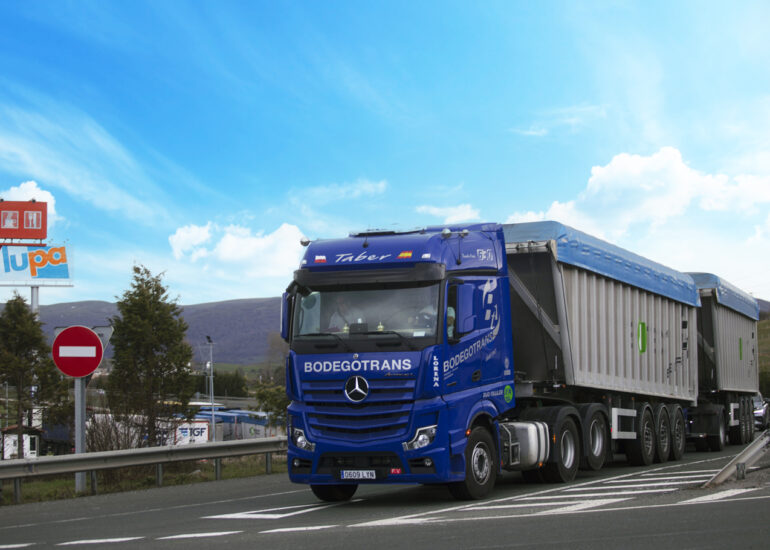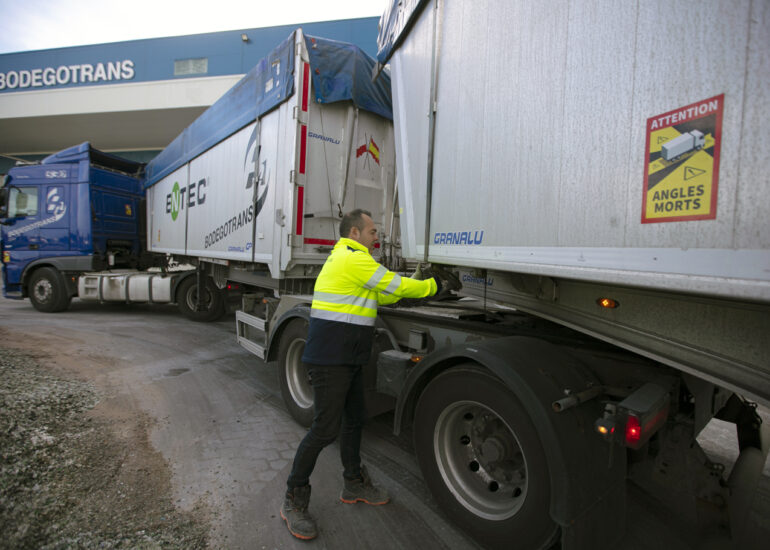Clash of the Trailer Titans
Clash of the Trailer Titans
Which combination does the best job: a duotrailer, a megatrailer, or a conventional truck and trailer? That’s what the leading Spanish commercial vehicle magazine, TRUCK, set out to uncover. ALBERTO PUERTA reports on this titanic clash.
Photography by Juan Caraballo
Since the birth of the internal combustion engine, road transport progress has been unstoppable. The mega trucks are the latest instalment in this incessant pursuit of efficiency.
The vehicles are well-suited to Spanish roads. We have Europe’s most extensive network of motorways and dual carriageways, with about 17,000km of high-capacity infrastructure, compared to around 15,000km in Germany and 11,000km in France. Spain’s topography is also very advantageous.
Of course, the introduction of mega trucks isn’t without its challenges. The main difficulties are the warehouses, scales, and loading and unloading areas, which are certainly not prepared for these giants. It is simply a matter of time, though, before logistics (and customers in general) adapt these structures to achieve the rapid and full operation of the “megas”.
In terms of the rules and regulations pertaining to these trucks, megatrailer length cannot exceed 25.25m, while maximum length for a duotrailer is 31.75m. Their GVMs are limited to 60 and 70 tonnes respectively.
Driving a mega can be demanding: the driver’s workload, over and above the responsibility of guiding the vehicle, is much higher than in a normal truck. This is partly due to the lack of suitable adaptation at the logistics and loading points, as previously noted. The length of the scales, facility dimensions, and other factors mean that the driver has to hitch and unhook several times to load and unload their cargo.
Moving on to the actual trailer test, we turned to Bodegotrans: a family business based in Hinojedo, Cantabria, run by brothers José Luis and Fernando Allende. Their father Mr Allende, the founder of the company, is enjoying a well-deserved retirement.
The company has a total of 138 units, of which nine are 60-tonne B-double trailers and seven are 70-tonne duotrailers. In addition to its own trucks, Bodegotrans employs 35 freelancers who work “full time” for the company.
At the Tanos industrial estate facilities, Bodegotrans collects its clients’ various bulk and other materials, which generally arrive by ship at the port of Santander. According to market demand, Bodegotrans makes deliveries throughout Spain. Taking advantage of a substantial order from a large consumer in Salamanca, we loaded the three vehicles for the test.
The one-way route was Tanos (Cantabria) to Huerta (Salamanca), including 295km of highways, on which we collected our data. The test route’s height profile was typical of routes used daily by Cantabrian carriers: the starting point in Torrelavega is 25m above sea level and from there we ascended to the Castilian plateau on the A-67, arriving in Reinosa at 1,002m above sea level. Continuing the trip, we joined the A-62 in Venta de Baños to travel along the route formerly named the “Route of the Portuguese” to the Cañizal crossroads 800m away, where we ended this first part of the test.
We returned from Peñaranda de Bracamonte to load quartz at the Erimsa mine, destined for the port of Santander. We started the data control at the town’s exit, travelling along the CL-610 towards the Castilian town of Medina del Campo. The road is 54km of regional route, with frequent town crossings and the typical annoying “bumps” that proliferate their asphalt.
In Medina del Campo, we joined the A-6 to take the A-62 again in Tordesillas. From Venta de Baños until the end of the test, we travelled once more along the A-67 highway – this time for 273km in the opposite direction. This stage totalled 327km from loading point to the final destination in the Bodegotrans Logística warehouses in Tanos. The total monitored route was roughly 622 / 620 / 614km, according to the trucks’ different tacho readings.
Again, this was a fairly representative route; the first 45km to Reinosa comprised hard ascents with gradients of up to 7%, which were evident in the average speed and consumption. The rest of the route traversed the Castilian plateau, with a consequent increase in speed and reduction in consumption. Note that the comparison between the trailers was carried out under normal working conditions, without interfering with the driving patterns of each driver and with an assistant in the cabin to collect the field data.
Analysing the results, we made a surprising discovery: the average speed of the “giants” was not significantly slower than that of the normal trailer. The duotrailer travelled at an impressive 83.06km/h with its 70 tonnes in tow, while the 60-tonne B-Double reached 84.32km/h. For its part, the conventional combination travelled swiftly at 86.75km/h. The trucks are limited to 90km/h with the exception of the duotrailer, which is limited to 89km/h (in the descents, the golden minute at 95km/h was used wisely to improve the average and inertia).
There were no surprises in terms of consumption: the duotrailer consumed 51.28 litres/100km, the mega recorded 47.4 litres/100km, and their “little brother” consumed 34.16 litres/100km.
As a summary – and given the results of this comparison – it should be emphasised that these megatrailers will not threaten the extinction of other configuration types. Instead, the market itself and the customers will decide how they are deployed in the future.
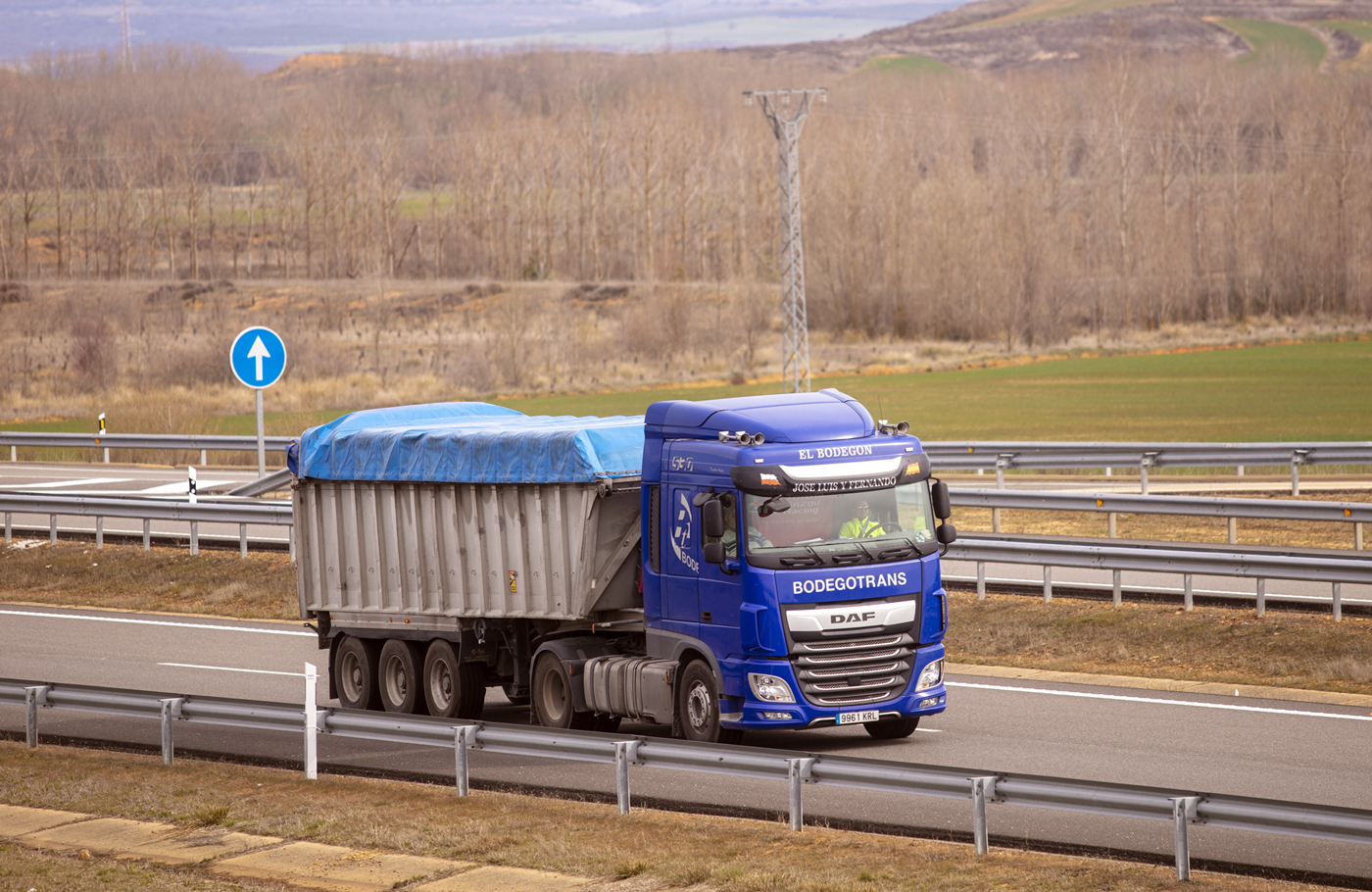
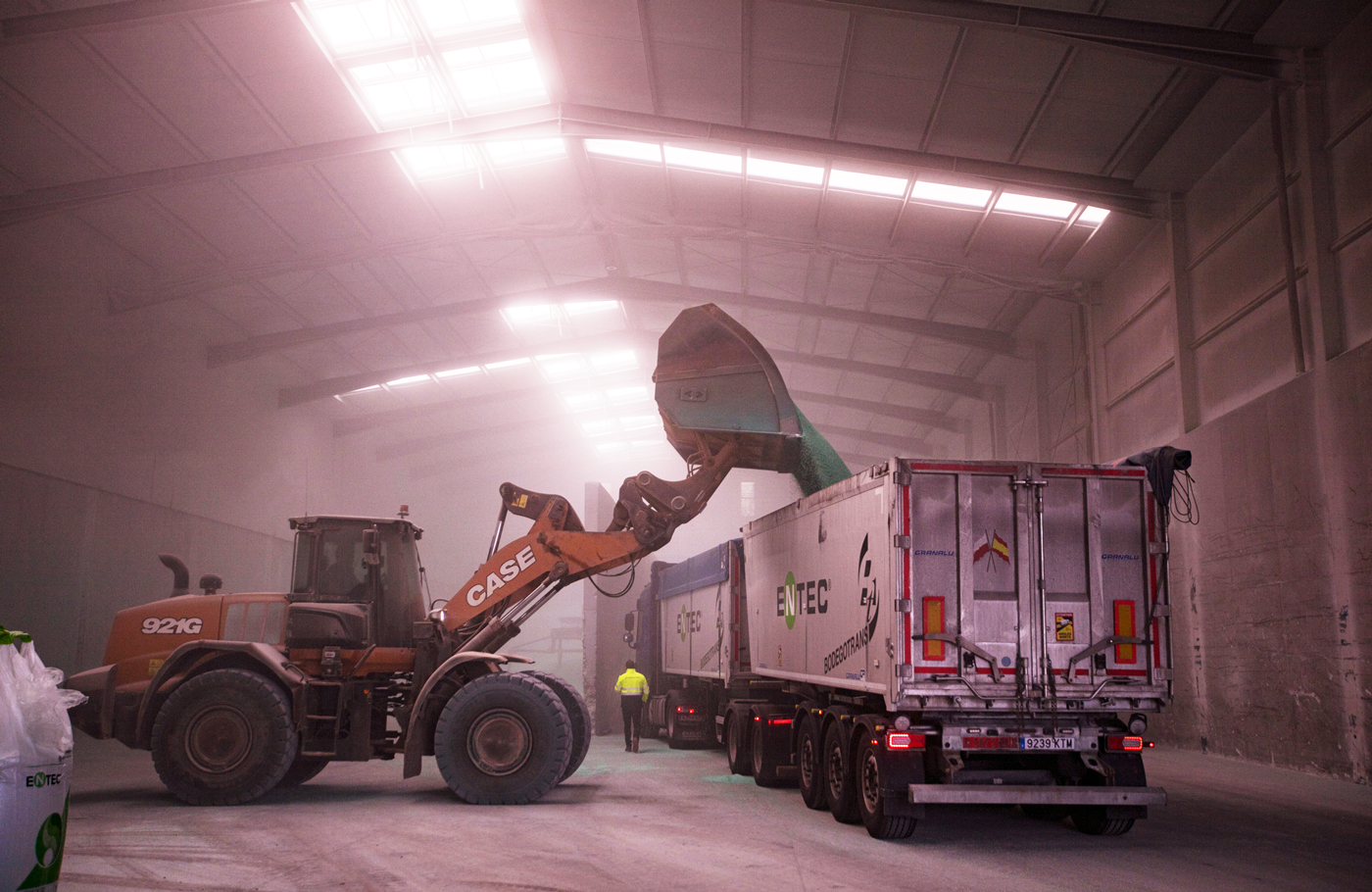
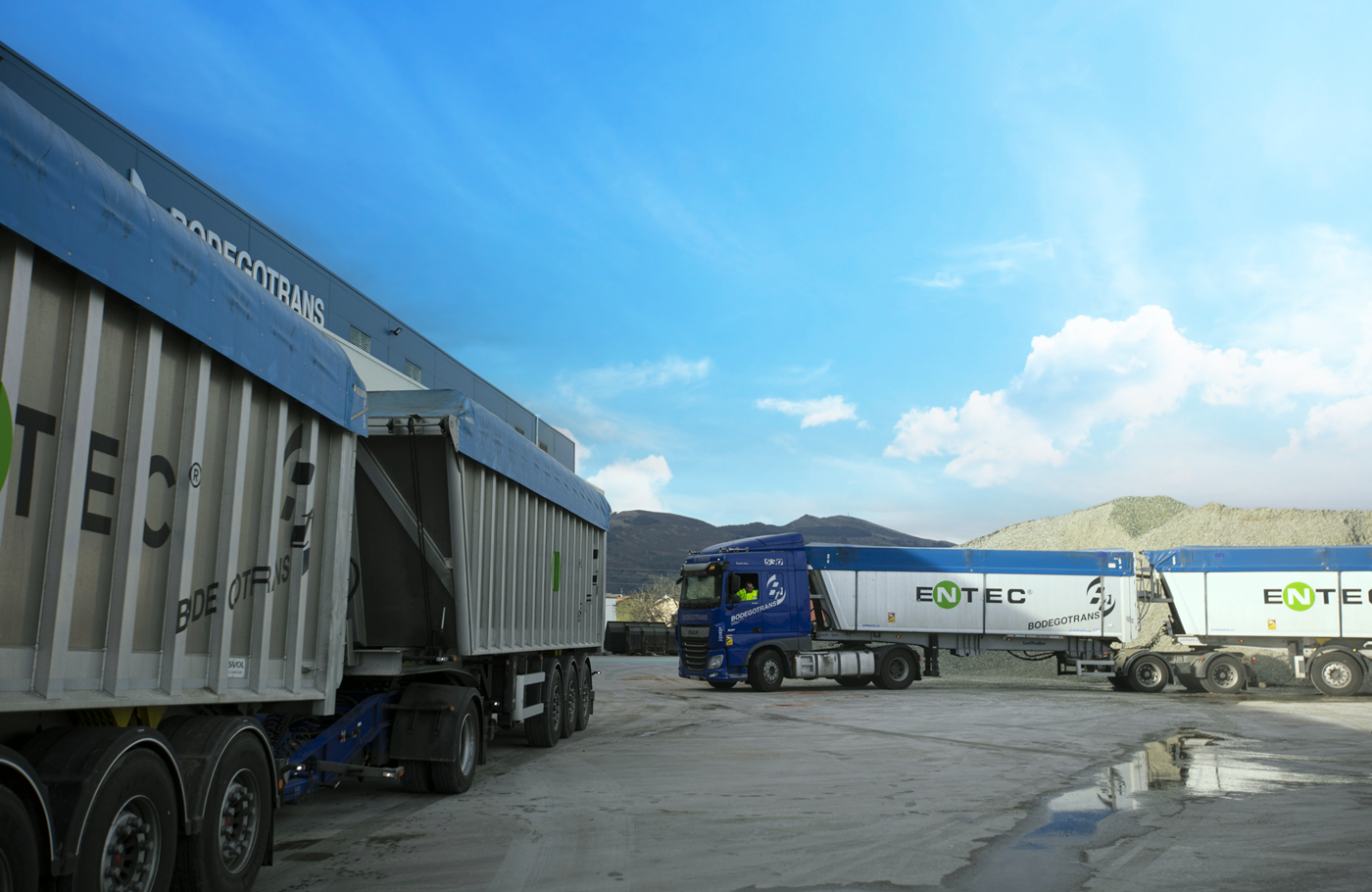
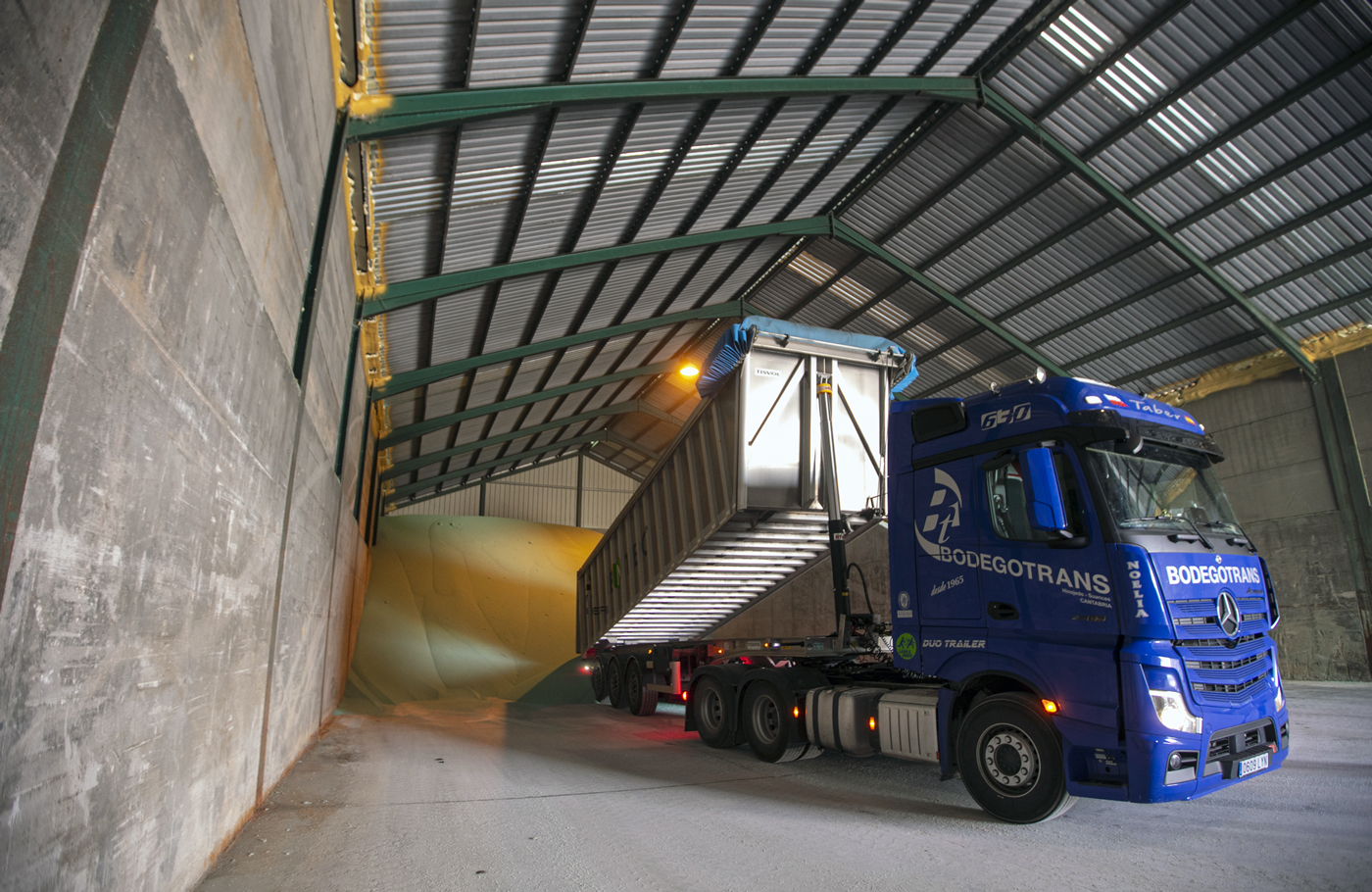
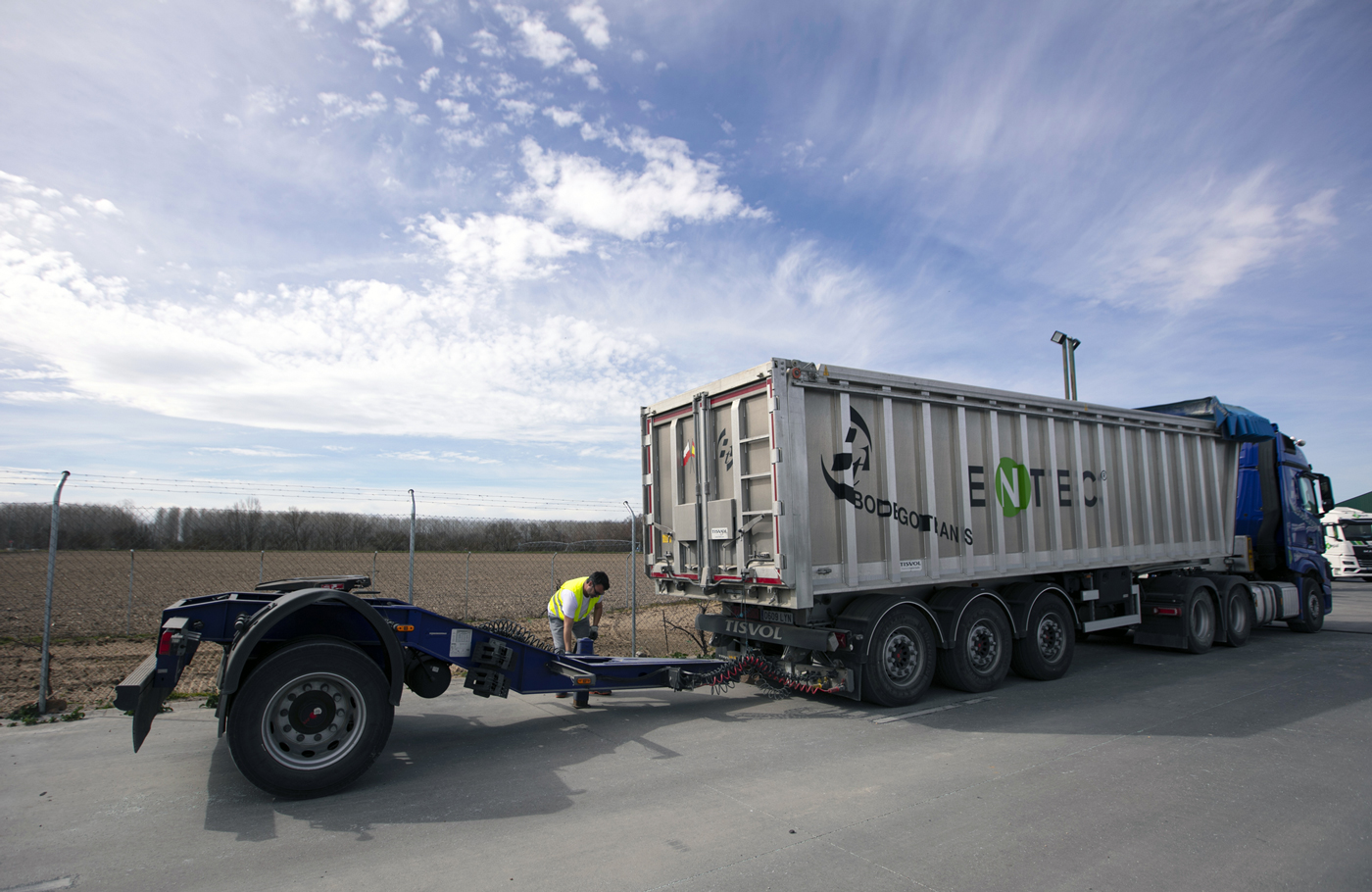
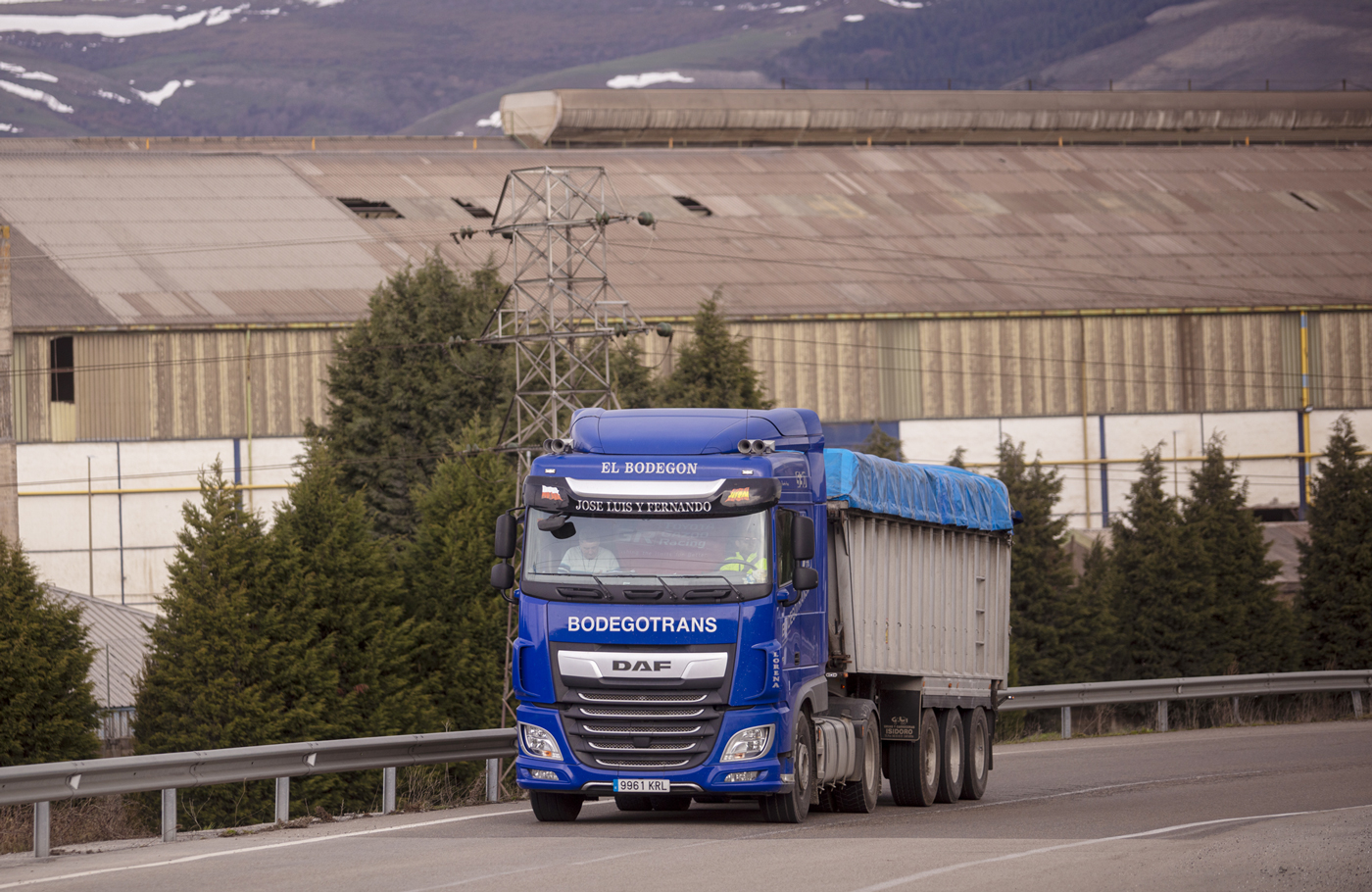
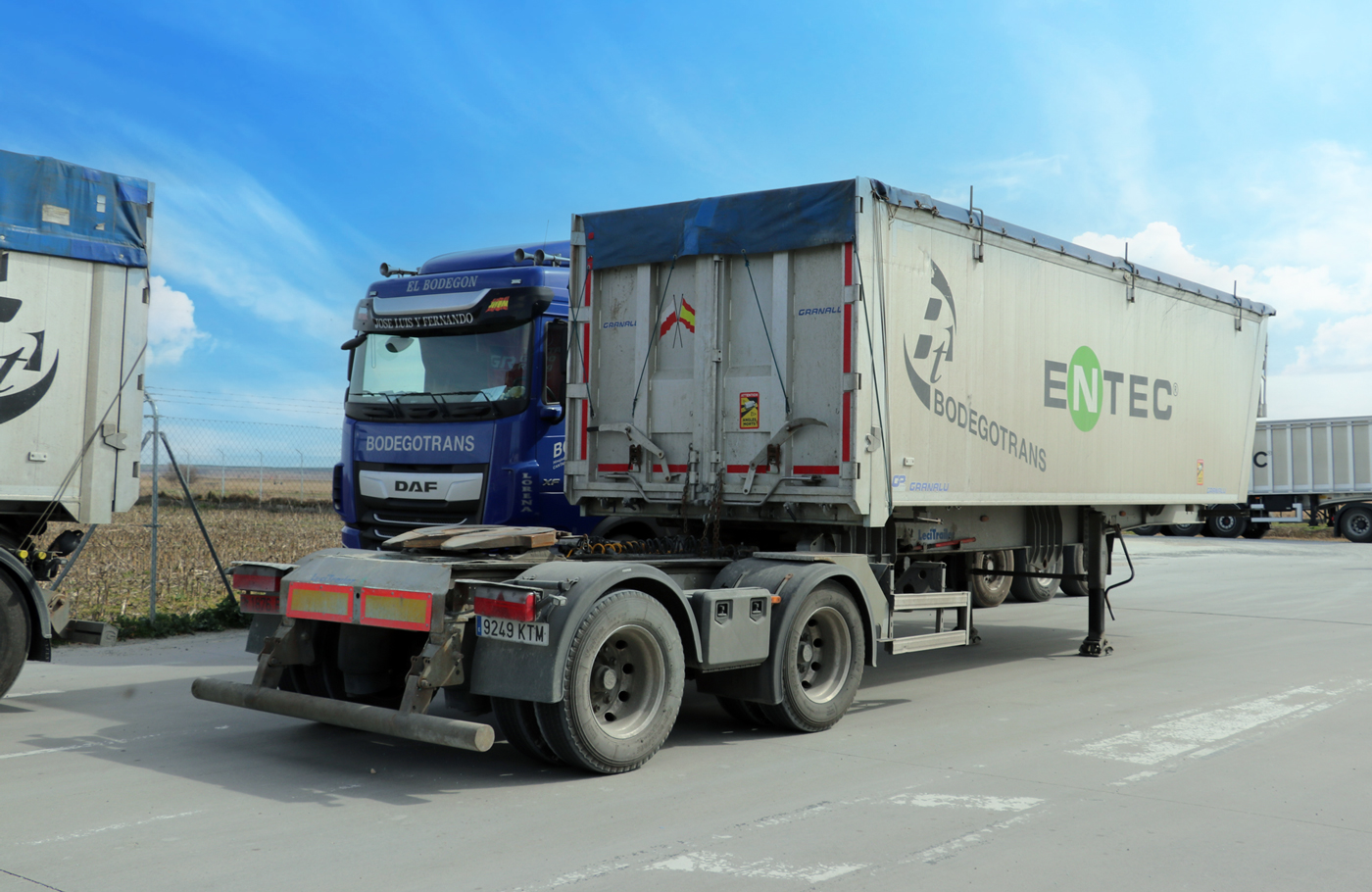
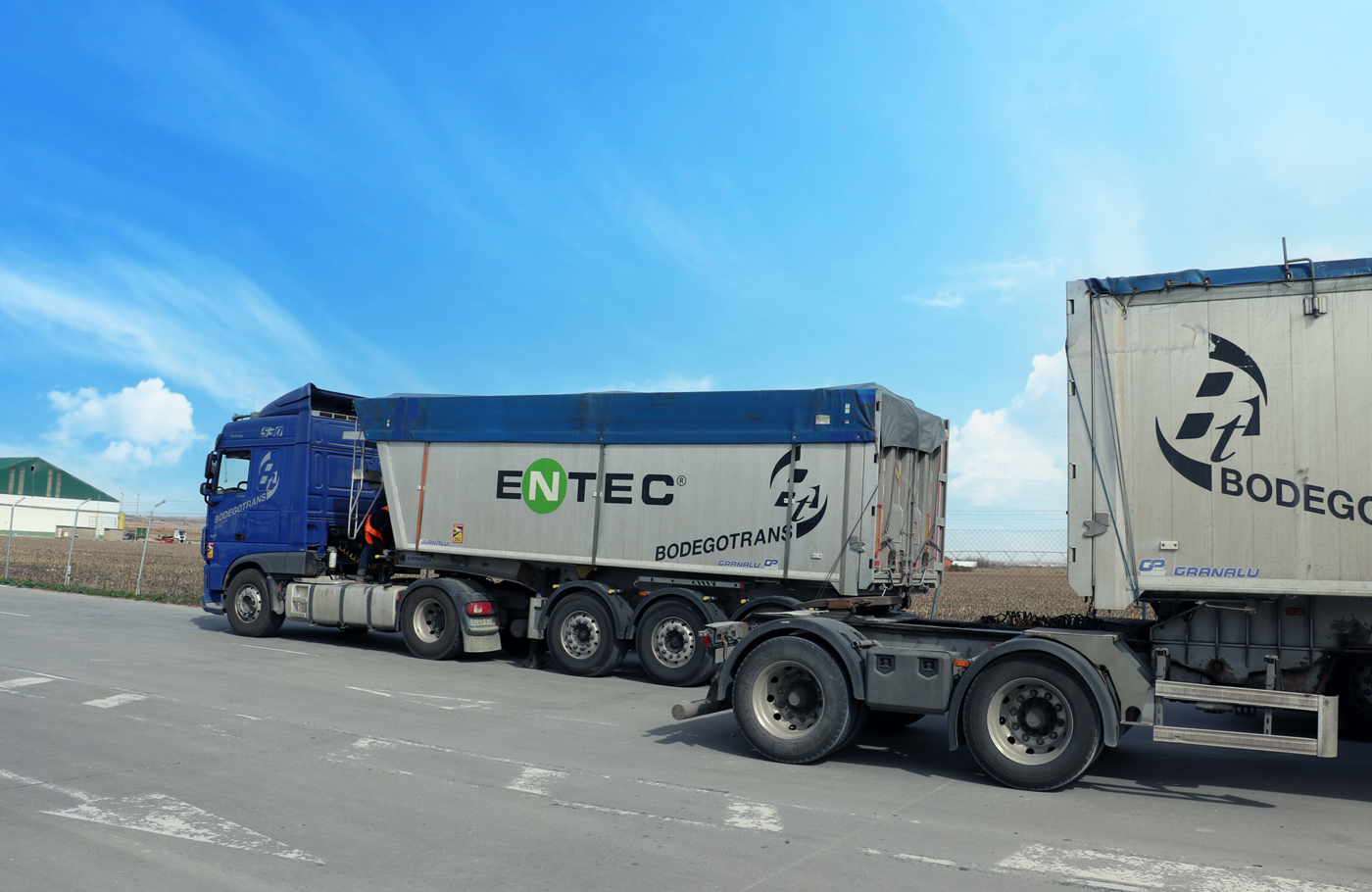
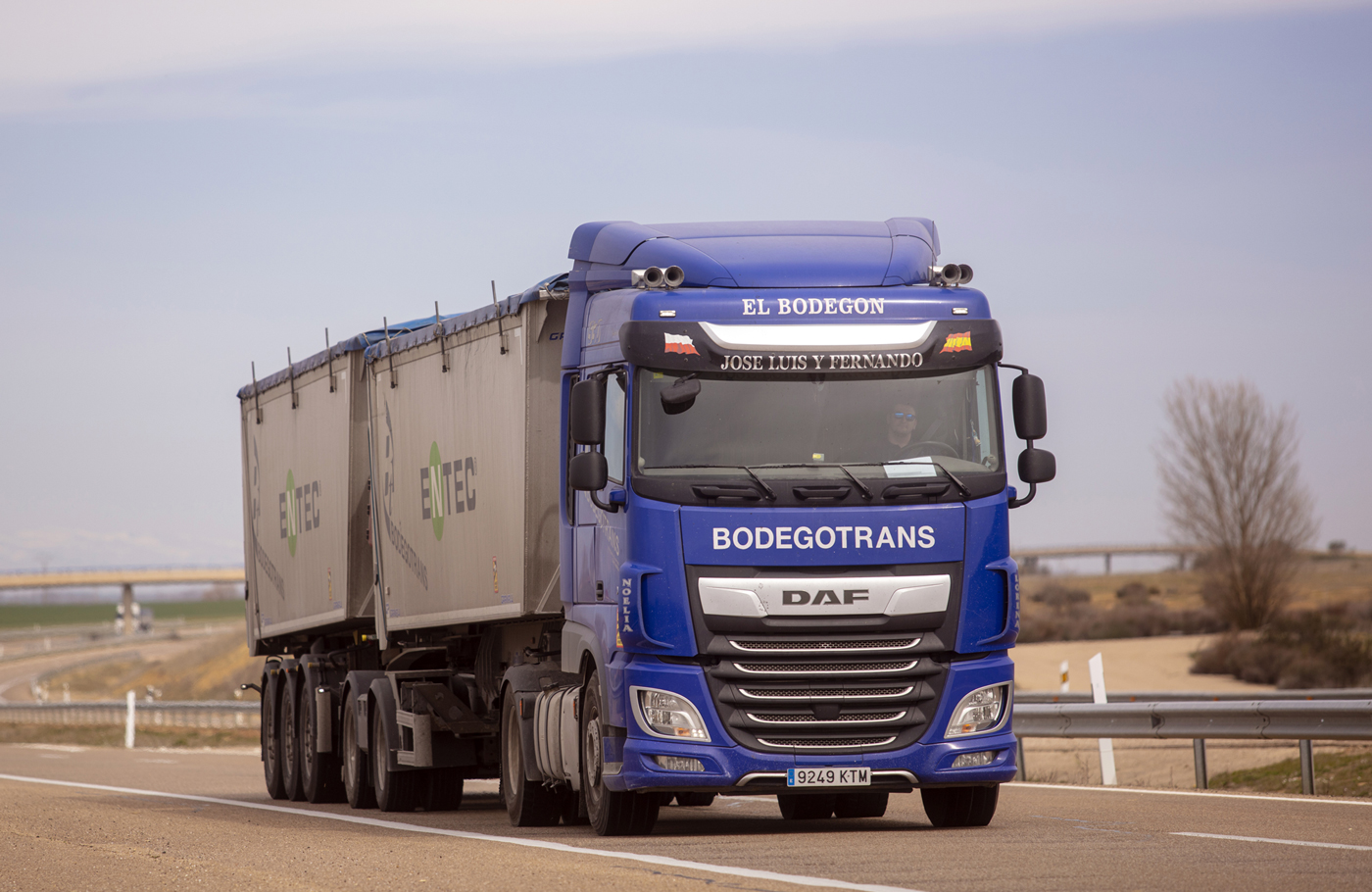
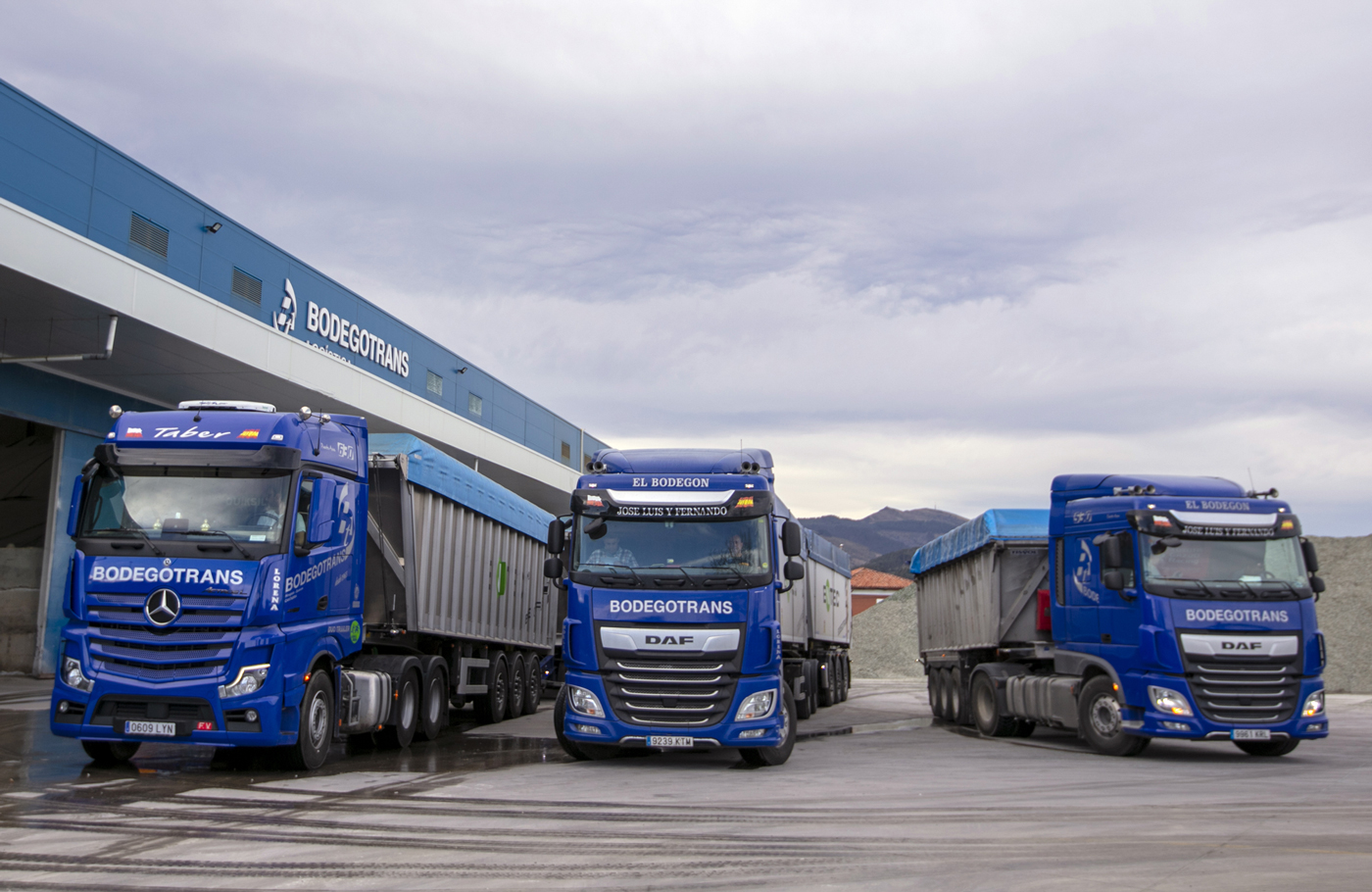
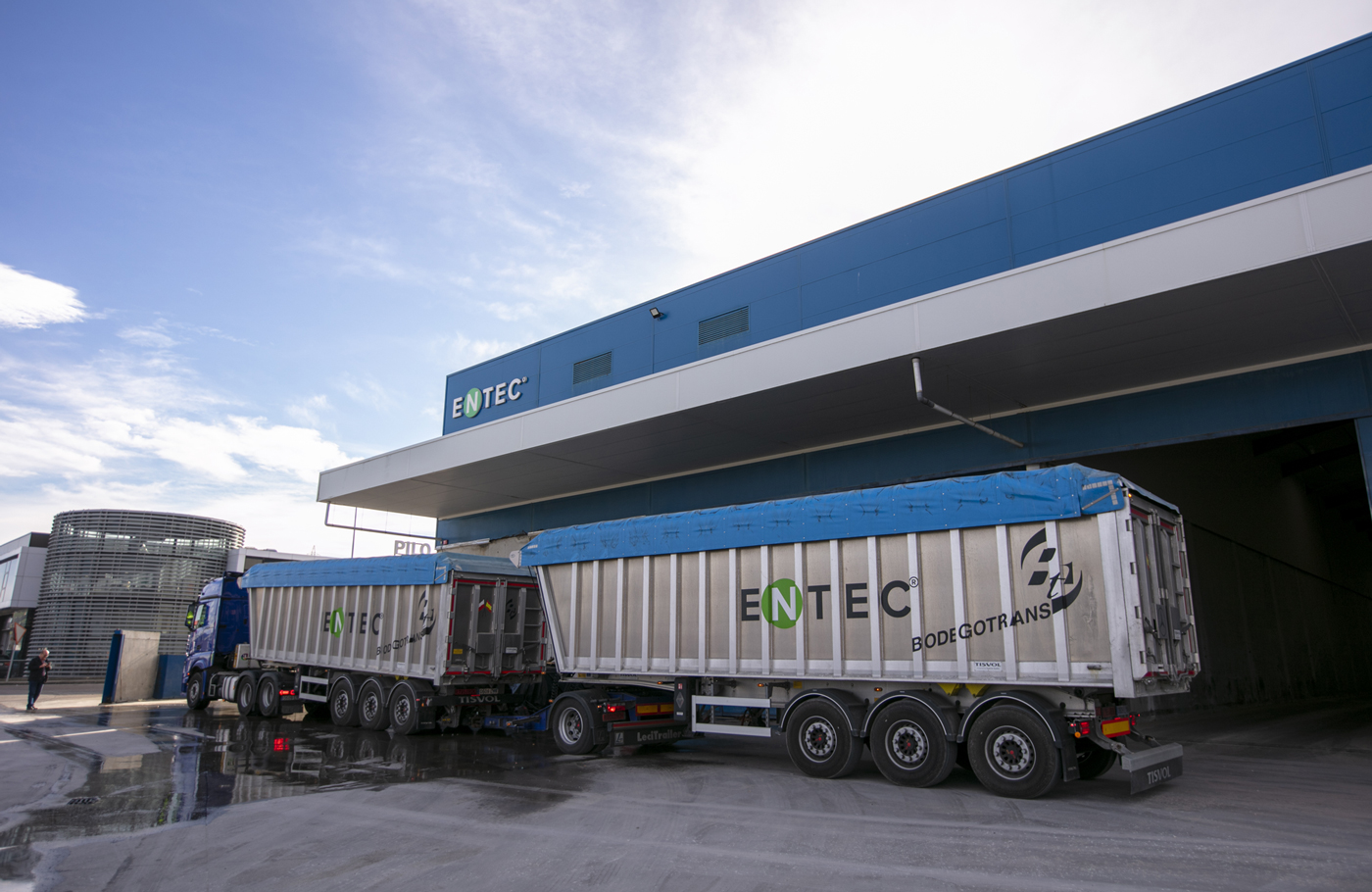
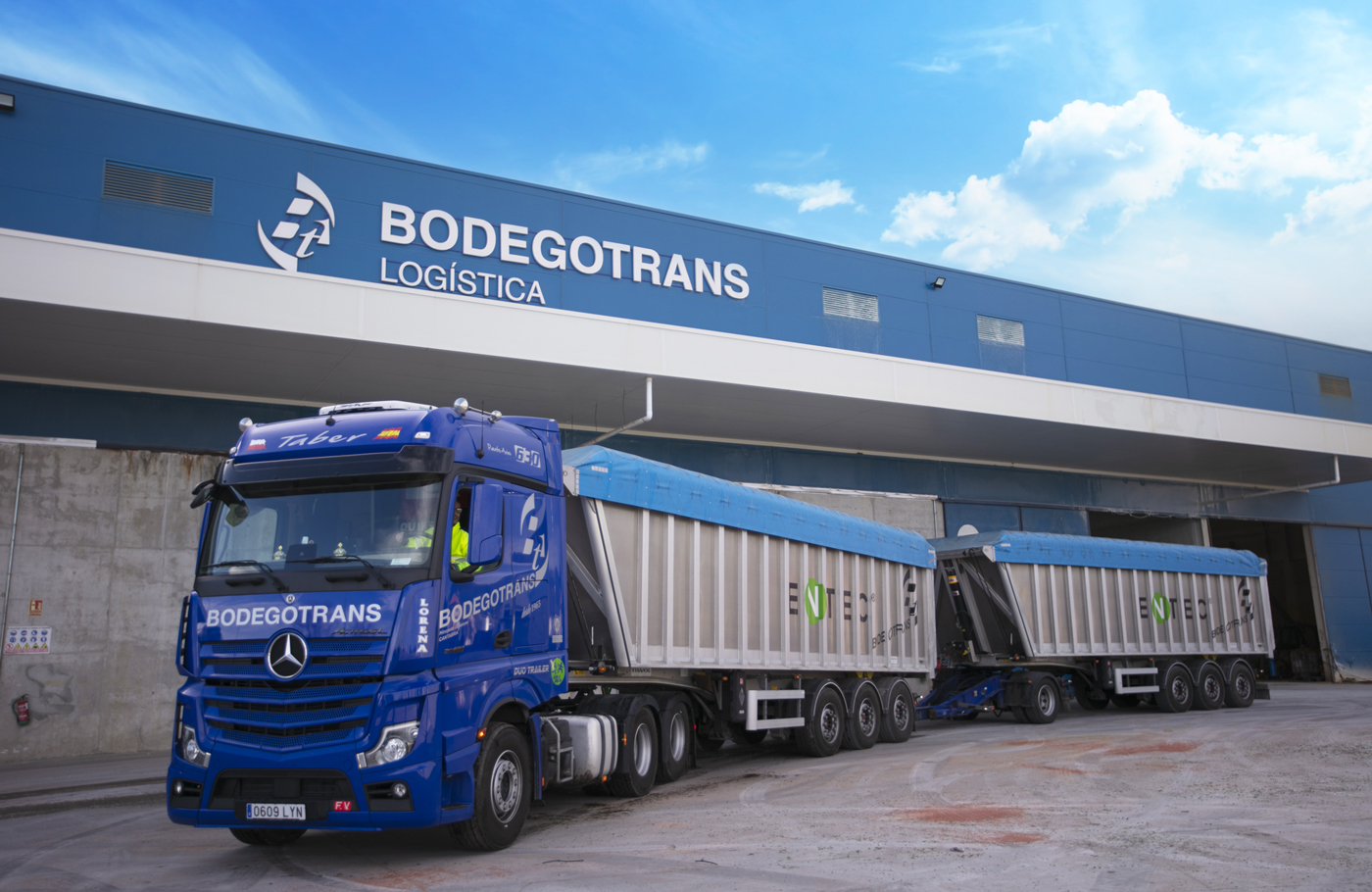
Duotrailer Mercedes-Benz 2863 (70 tonnes)
Bodegotrans has seven duotrailer units, including this Mercedes-Benz 2863. The combination offers a very successful solution, including the two-axle rear tandem (one drive and another “pusher” that can be raised according to the load or traction of the drive axle). It is certainly a more rational solution than towing these sets with a 4×2 tractor.
The engine has an output of 625hp and a specific power of 9hp/tonne. The trailer consisted of two conventional 10.7m-long Tisvol bathtubs* coupled by means of a dolly with a twin wheel axle, and the total length of the test combination was 27m. It was driven by Alberto González, a professional with 12 years of experience in the sector.
*Bathtub is slang used in Europe to designate a large volume tipper with a rectangular section.
Megatrailer B-Double DAF XF.530 (60 tonnes)
Approved in 2016, the B-Double set is the most used to date by Spanish companies due to its flexibility. It consists of two trailers, the first of which mounts a fifth wheel in which the second semi is attached. It is a sui generis (unique / constituting a class of its own) configuration that is used in other countries, although in a different way to those in Spain. This is because to solve the deficiencies in the loading and unloading sites, Spanish operators have equipped the first trailer with an extendable double chassis in the rear, allowing the area of the fifth wheel to be “folded” under the body and in this way facilitating conversion into a conventional semi-trailer. Granalu provided the two towed assemblies with aluminium alloy tubs, which had a total length of 21m. The tyres of the first trailer were twin 275/70 R22.5 wheels.
The tractor unit was a DAF XF 530 in a 4×2 configuration. Although it offers a very favourable tare weight and is economical on the flat roads, it can be somewhat lacking in power over demanding topography. In our opinion, all large combinations should be driven in a 6×2 or 6×4 configuration, but the legislation does authorise this type.
The driver of this combination was Gorka Iriondo, a 43-year-old professional with 10 years’ experience, who has been at the controls of a megatrailer for two years.
Conventional trailer hooked to a DAF XF.530 (40 tonnes)
The “little brother” of this comparison was the traditional combination, although it boasts a remarkable load capacity thanks to the tare weight of only 13.7 tonnes. This allows for a respectable 26.3 tonnes of payload. The tipper – manufactured by Tisvol – was made entirely of aluminium. It had a lift on the first axle and an automatic awning system.
The trailer was pulled by a DAF XF.530 tractor with an automated gearbox and integrated retarder. This tractor gave the combination the highest specific power in the comparison with 13.25hp/tonne. This was borne out by the results, where it was shown to be the fastest of the three combinations.
José Victor Favacho drove the combination. Clearly, this type of truck will continue to be in the majority in transport in general, especially when it comes to the transportation of bulk goods. There are many good reasons why Bodegotrans has 130 of these vehicles!
What the drivers said
Alberto González Sánchez: duotrailer driver
“It is a very stable truck on the road. It is easy and even fun to drive. It is somewhat more complicated than the normal or the mega to reverse. I am delighted with the Mercedes-Benz tractor for power and stability. Against? Hooking and unhooking manoeuvres.”
Gorka Iriondo Eguía: megatrailer driver
“Despite the misgivings it raises, the ‘mega’ is an easy truck to drive: safe and very stable on the road. It has been a pleasant experience and I have quickly adapted to it.”
José Victor Favacho de Oliveira: conventional trailer driver
“I love my job. I like to have the truck very clean and well cared for and make long-distance trips, although I miss service areas where I can rest and spend the night.”
RESULTS: CONSUMPTIONS AND AVERAGES
1st ROUTE: TORRELAVEGA – SALAMANCA
Trucks | MB Actros 2863 duotrailer (70t) | DAF XF 530 megatrailer (60t) | DAF XF 530 classic set (40t) |
1st STAGE: Torrelavega (PI Tanos) – Reinosa | |||
Mileage of tachograph | 45.5 | 45.7 | 45.5 |
Consumption (L/100 km) | 131.60 | 118.38 | 72.94 |
Average Speed (km/h) | 52.45 | 54.93 | 73.19 |
Coefficient / Net profitability* | 0.399 / 1.835 | 0.464 / 1.823 | 1.003 / 2.639 |
2nd STAGE: Reinosa – South Palencia | |||
Tachograph kilometres | 130.2 | 129.3 | 126.8 |
Consumption (L/100km) | 41.48 | 44.08 | 30.52 |
Average Speed (km/h) | 85.53 | 89.69 | 88.67 |
Coefficient / Net profitability* | 2.062 / 8.485 | 2.034 / 7.993 | 2.905 / 7.640 |
3rd STAGE: South Palencia – Tordesillas | |||
Tachograph kilometres | 66.6 | 65.4 | 70.4 |
Consumption (L/100 km) | 43.66 | 36.54 | 28.27 |
Average Speed (km/h) | 88.31 | 89.35 | 89.49 |
Coefficient / Net profitability* | 2.022 / 9.301 | 2.445 / 9.608 | 3.166 / 8.326 |
4th STAGE: Tordesillas – Salamanca (Cañizal) | |||
Tachograph kilometres | 53.0 | 53.0 | 53.0 |
Consumption (L/100 km) | 56.53 | 53.21 | 37.92 |
Average Speed (km/h) | 89.49 | 87.04 | 90.08 |
Coefficient / Net profitability* | 1.583 / 7.281 | 1.636 / 6.429 | 2.375 / 6.246 |
1st PARTIAL RESULT | |||
Tachograph kilometres | 295.3 | 293.4 | 295.7 |
Consumption (L/100km) | 58.56 | 55.62 | 37.71 |
Average Speed (km/h) | 79.04 | 81.17 | 86.29 |
Coefficient / Net profitability* | 1.350 / 6.210 | 1.459 / 5.734 | 2.289 / 6.020 |
2nd ROUTE: PEÑARANDA de BRACAMONTE – TORRELAVEGA
Trucks | MB Actros 2863 duotrailer (70t) | DAF XF 530 megatrailer (60t) | DAF XF 530 classic set |
1st STAGE: Peñaranda de Bracamonte – Medina del Campo | |||
Tachograph kilometres | 52.2 | 51.4 | 51.0 |
Consumption (L/100km) | 42.59 | 41.83 | 30.20 |
Average Speed (km/h) | 79.29 | 77.39 | 77.47 |
Coefficient / Net profitability* | 1.862 / 8.565 | 1.850 / 7.270 | 2.566 / 6.748 |
2nd STAGE: Medina del Campo – Valladolid | |||
Tachograph kilometres | 59.1 | 58.3 | 57.4 |
Consumption (L/100km) | 47.50 | 42.37 | 31.18 |
Average Speed (km/h) | 84.80 | 86.80 | 86.35 |
Coefficient / Net profitability* | 1.785 / 8.211 | 2.049 / 8.052 | 2.769 / 7.282 |
3rd STAGE: Valladolid – Reinosa | |||
Tachograph kilometres | 171.0 | 168.8 | 165.8 |
Consumption (L/100km) | 48.80 | 43.42 | 32.63 |
Average Speed (km/h) | 89.71 | 89.76 | 89.62 |
Coefficient / Net profitability* | 1.838 / 8.454 | 2.067 / 8.123 | 2.747 / 7.225 |
4th STAGE: Reinosa – Torrelavega (PI Tanos) | |||
Tachograph kilometres | 45.0 | 48.4 | 44.5 |
Consumption (L/100 km) | 28.00 | 23.76 | 22.47 |
Average Speed (km/h) | 89.71 | 92.09 | 92.17 |
Coefficient / Net profitability* | 3.209 / 14.761 | 3.876 / 15.233 | 4.102 / 10.788 |
2nd PARTIAL RESULT | |||
Tachograph kilometres | 327.3 | 326.9 | 318.7 |
Consumption (L/100 km) | 44.71 | 40.07 | 30.56 |
Average Speed (km/h) | 87.00 | 87.36 | 87.18 |
Coefficient / Net profitability* | 1.946 / 8.951 | 2.181 / 8.568 | 2.852 / 7.502 |
FINAL RESULTS | |||
Tachograph kilometres | 622.6 | 620.3 | 614.4 |
Consumption (L/100km) | 51.28 | 47.43 | 34.16 |
Average Speed (km/h) | 83.06 | 84.32 | 86.75 |
Coefficient / Net profitability* | 1.620 / 7.450 | 1.778 / 6.987 | 2.531 / 6.656 |
* To determine each truck’s profitability, the coefficient was obtained by dividing average speed by average consumption. Higher numbers equate to higher efficiency, showing the traditional trailer to be the most effective, with an outstanding ratio of 2.531. It is followed by the megatrailer with 1.778 and the duo with 1.620.
Net profitability is obtained by multiplying the general coefficient by the payload capacity. Here we see diametrically opposite results, clearly showing the main argument for the use of large assemblies. The duo trailer leads this ethereal classification with a ratio of 7.450 thanks to its impressive 47-tonne payload. It is some way ahead of the megatrailer’s coefficient of 6.987 and payload of 39 tonnes, as well as the conventional trailer’s ratio of 6.656 and payload of 26.3 tonnes.
Published by
Focus on Transport
focusmagsa

